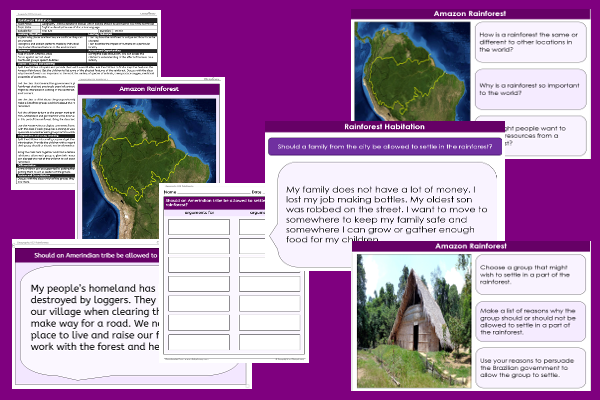Lesson Five – Rainforest Habitation

This geography teaching pack for Key Stage Two gets the children to practise holding a class debate to explore some of the special reasons as to why different groups of people should be allowed to live in a rainforest.
The class can identify and describe the positive and negative impact of different forms of human activity on a rainforest habitat such as farming cattle or rubber tapping.
Download this teaching pack including a lesson plan, classroom activities and an interactive presentation to practise holding a class debate to explore some of the special reasons as to why different groups of people should be allowed to live in a rainforest
Activities in this teaching pack include a display poster to identify and describe the location of the Amazon rainforest in South America, a shared reading text to explore some of the special reasons for and against different groups settling in the rainforest and a template to select and record reasons for or against allowing a particular group to settle in a rainforest.
The interactive presentation can be used to explore how to hold a class debate to discuss which different groups of people should be allowed to live in a rainforest.
This lesson is part of a geography scheme of work to get the children to identify and describe the physical and human geographical features of tropical rainforests and make comparisons with other locations around the world. There are teaching activities for shared learning, differentiated worksheets to support independent learning and interactive presentations to introduce concepts and key skills.
-

Determinant Lists
Explain and model how to make lists of objects used and found in different locations to match the correct determinants of a and an
-

English SPAG Assessment
Assess abilities in composing sentences for fiction and non-fiction using the correct spellings, punctuation marks and grammar vocabulary phrases
-

Maths Arithmetic Assessment
Assess abilities in solving arithmetic number problems for addition, subtraction, multiplication and division when working with informal and formal written calculations
-

Environment
Identify and describe some of the special landscapes and locations that can be found in the world and reflect on how they can be protected and preserved for the future
